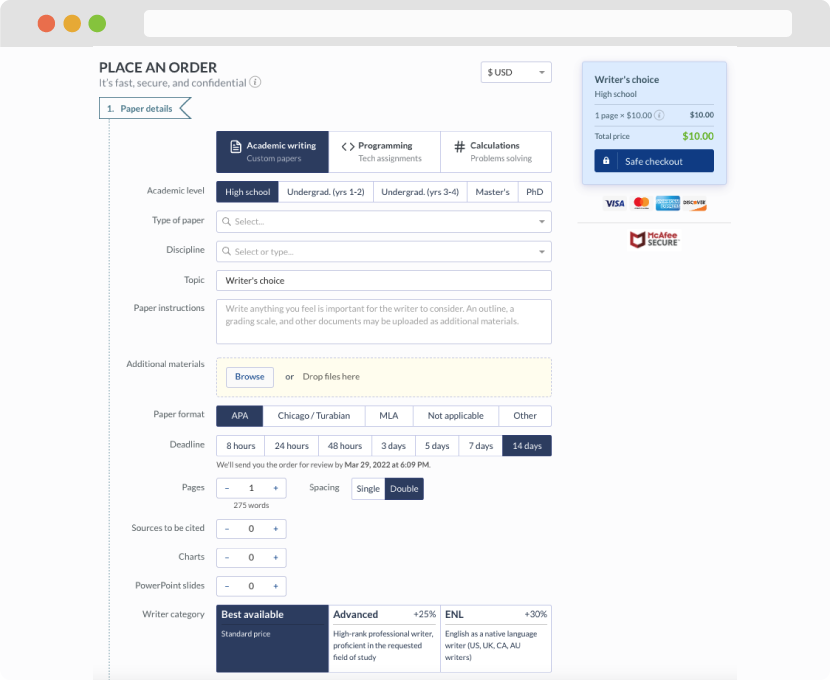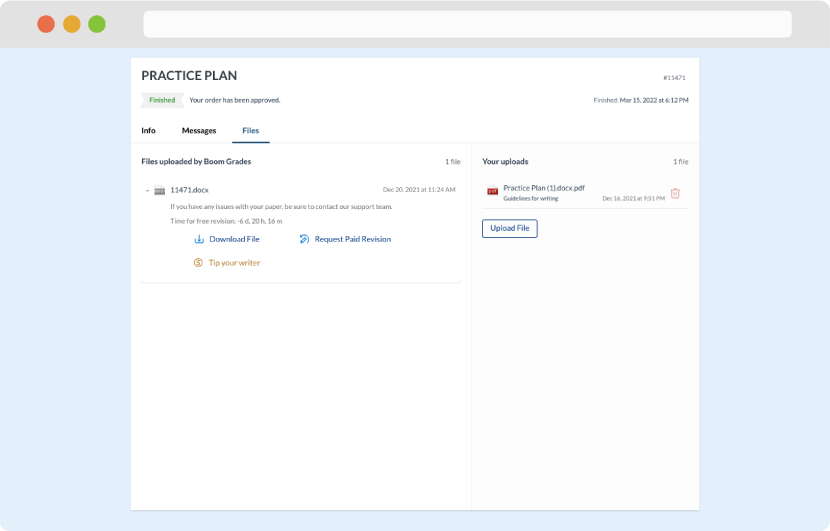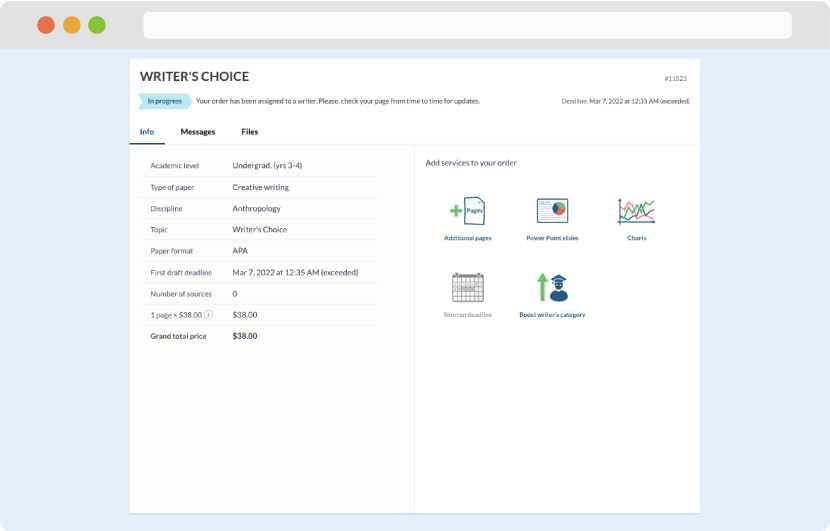After critically reviewing “Social media publishing: 5 lessons for brands” located in
Module 4: Lecture Materials & Resources
, analyze the article.
https://contentmarketinginstitute.com/2012/11/social-media-publishing-lessons-brands-learned/
Cooke, B. (2014, August 5). Social media publishing: 5 lessons for brands. Content Marketing Institute. https://contentmarketinginstitute.com/2012/11/social-media-publishing-lessons-brands-learned/
Please use the Article Analysis Template below to answer the questions.
Article Analysis Template
Submission Instructions:
ARTICLE ANALYSIS
Name: _______________________ Date: ____________________
1. Briefly and clearly state the main idea of the article:
2. List the important facts that the author(s) uses to support the main idea:
3. Identify weaknesses in its argument such as bias, misinformation, or flawed reasoning:
4. What point could be added to its thesis?
5. How do you feel this article relates to course material?
6. Write a personal review of the article making correlations if possible between theory and practice.
7. In your opinion, was this article published in a credible journal?
8. Cite article (APA style) as you cite it in references
Social Media Marketing
Tracy L. Tuten & Michael R. Solomon
Social Community
Chapter 6
Learning objectives
How do social networking communities enable user participation and sharing?
In what ways can brands utilize social networking communities for branding and promotion?
How can brands reach consumers organically using social network sites? What characteristics do brand fans exhibit?
What forms of paid media can be used in social communities? Why is paid media important to social media marketers?
3
Figure 6.1 The social community zone
Characteristics of social networking sites
Social networking sites typically vary in terms of three important dimensions:
Audience and degree of specialization
The social objects that mediate the relationships among members
Degree of decentralization or openness
Marketing applications in the social community zone
Social presence
1
Earned media
2
Paid media
3
Social presence: Brands as relationship nodes
Brands create a brand profile within selected social networking communities. In this way, the brand acts as a node in the network’s social graph.
The fan base (friends/followers) is an indicator of the brand’s success in establishing a known presence within a community.
8
Determining the brand’s social media character
What are the brand’s core values?
What social objects illustrate the values?
What has the brand promised?
What are the aspirational attributes?
What traits are associated with the brand?
What opportunities exist?
What stories bring the brand to life?
Figure 6.2 Why people friend brands on social media
Figure 6.3 Why people unfriend brands
Characteristics of social fans
Emotional engagement
1
Self-identification
2
Cultural competence
3
Auxiliary consumption
4
Production
5
Friendvertising and the 3M model for FGC
Megaphone
Magnet
Monitor
Brands talk
@menshumor: This morning I gave birth to a food baby and I think @tacobell is the father.
@tacobell: I want a DNA test.
Real-time marketing
Contests and requests for UGC
Visit Philly maintains a gallery of photographs submitted by fans and tourists of Philadelphia.
f11photo / Shutterstock.com
Characteristics of brand community engagement
Cohesive social channel strategy
Active community management
Content mission, quality, and storytelling
Engagement and community relationship building
Collaboration with influencers
Amplification efforts
Figure 6.7 Relationships among types of media
Why paid media?
Figure 6.4 Understanding organic reach
Paid media in social communities
Social ads are online display ads that incorporate user data in the ad or in the targeting of the ad and enable some form of social interaction within the ad unit or landing page.
A social engagement ad contains ad creative (image and text) along with an option to encourage the viewer to engage with the brand (e.g., clickable “Like” button).
A social context ad includes ad creative, an engagement device, and personalized referral content from people in the viewer’s network.
Organic social ads are shared on a person’s activity stream following a brand interaction (such as liking the brand).
Figure 6.5 Advertising options on social networks
Figure 6.5 Advertising options on social networks
Figure 6.6 Elements of Facebook ad design
Native advertising
Paid advertising based on a form unique to
the vehicle within which it is placed.
Table 6.1 IAB native advertising
evaluative framework
For reflection: Facebook live
How does the placement of a brand message near other offensive posts influence the audience perception of the brand?
Mini-case study: Tito’s Vodka
Embedded brand communities
Facebook
Instagram
Twitter
The brand presence stays true to its hand-crafted image and love of dogs (e.g., #vodkafordogpeople).
UGC invited with campaigns like “Fresh Start.”
Credit: ohrim / Shutterstock.com
Recap and questions
How do social networking communities enable user participation and sharing?
In what ways can brands utilize social networking communities for branding and promotion?
How can brands reach consumers organically using social network sites? What characteristics do brand fans exhibit?
What forms of paid media can be used in social communities? Why is paid media important to social media marketers?
Social Media Marketing
Tracy L. Tuten & Michael R. Solomon
Social Publishing
Chapter 7
Learning objectives
What are the channels of social publishing?
Who creates the content published in social channels? What kind of content can be published?
What content characteristics enhance perceived content quality and value? How can marketers plan and organize their efforts as they embrace a social publishing strategy?
What is the role of social publishing in social media marketing? How do social media marketers utilize search engine optimization and social media optimization to meet marketing objectives?
How can social content be promoted? What role do social news and social bookmarking sites play in content promotion?
3
Figure 7.1 The social publishing zone
What is social publishing?
Social publishing is the production and issuance of content for distribution via social publishing sites like blogs, media-sharing sites, social network sites, and social bookmarking and social news sites.
Dogshaming: A blog
Social publishers
Typical people
Professionals
Organizations
Brands
Media companies
What is content marketing?
“Content marketing is a strategic marketing approach focused on creating and distributing valuable, relevant, and consistent content to attract and retain a clearly-defined audience – and, ultimately, to drive profitable customer action”
Types of content
Blog posts
Feature articles
Microblog posts
Press releases
White papers and
case studies
Newsletters
Videos
Webinars
Presentations
Podcasts
Photos
More
Figure 7.2 Evaluating content for social publication
Figure 7.2 Evaluating content for social publication
What is authentic?
Editorial
Commercial
Consumer-generated
Organic content
Incentivized content
Consumer-solicited content
Sponsored content
Table 7.1 Marketing objectives for
social publishing
Table 7.2 Types of content in
marketers’ social publishing strategies
Figure 7.3 A content value ladder
Table 7.3 Types of pillar content
Table 7.4 Top social publishing vehicles for marketers
Promoting social content
Paid activation and seeding
Media optimization
1
2
Table 7.5 Paid promotions activate social content
Media optimization
Search engine optimization (SEO) is the process of modifying content, site characteristics, and content connections to achieve improved search engine rankings; marketers develop and publish content in ways that improve the likelihood that search engines will rank the sites well in response to search queries.
Social media optimization (SMO) is a process that enhances the likelihood for social content to be visible, shareable, and linkable in online communities. If the content is valuable and engaging, people will share it, post it, rank it, tag it, and augment it, resulting in enhanced reach.
Table 7.6 Media optimization matrix
SERP viewing patterns
On-site optimization variables
Keywords
Meta-tags
Title
Title tag
Heading tag
URL
Tools like Google’s Keyword Planner help marketers select effective keywords to use.
Off-site optimization
Links and linkwheels
Affiliate marketing
SEO tactics
White hats
Black hats
Gateway pages and cloaking
Link farms
Gray hats
Keyword stuffing
Link exchanges
Three-way linking
Paid links
Writing titles with linkbait
Resource hook: 5 tips for great grades
Contrary hook: Lose weight with chocolate
Humor hook: obese skunk cuts out bacon sandwiches
Giveaway hook: save $50 here
Research hook: 66% of Americans are overweight
Figure 7.5 Social media press release
Mini-case study: GoPro
Branded content
Invited UGC
Influencer content from feature photographers
Credit: iStock.com /Wetframes
For reflection
Influencers are required by the FTC to disclose brand endorsements.
Warner Bros Home Entertainment was charged with failing to disclose payment to prominent YouTuber gamers to promote its game, Middle Earth: Shadow of Mordor.
When it comes to influencer-produced and -promoted content endorsing brands, what is deceptive?
Do consumers need protection?
Recap and questions
What are the channels of social publishing?
Who creates the content published in social channels? What kind of content can be published?
What content characteristics enhance perceived content quality and value? How can marketers plan and organize their efforts as they embrace a social publishing strategy?
What is the role of social publishing in social media marketing? How do social media marketers utilize search engine optimization and social media optimization to meet marketing objectives?
How can social content be promoted? What role do social news and social bookmarking sites play in content promotion?
Recap and questions
Essay Writing Service Features
Our Experience
No matter how complex your assignment is, we can find the right professional for your specific task. Achiever Papers is an essay writing company that hires only the smartest minds to help you with your projects. Our expertise allows us to provide students with high-quality academic writing, editing & proofreading services.
Free Features
Free revision policy
$10Free bibliography & reference
$8Free title page
$8Free formatting
$8How Our Dissertation Writing Service Works

First, you will need to complete an order form. It's not difficult but, if anything is unclear, you may always chat with us so that we can guide you through it. On the order form, you will need to include some basic information concerning your order: subject, topic, number of pages, etc. We also encourage our clients to upload any relevant information or sources that will help.
Complete the order form
Once we have all the information and instructions that we need, we select the most suitable writer for your assignment. While everything seems to be clear, the writer, who has complete knowledge of the subject, may need clarification from you. It is at that point that you would receive a call or email from us.
Writer’s assignment
As soon as the writer has finished, it will be delivered both to the website and to your email address so that you will not miss it. If your deadline is close at hand, we will place a call to you to make sure that you receive the paper on time.
Completing the order and download